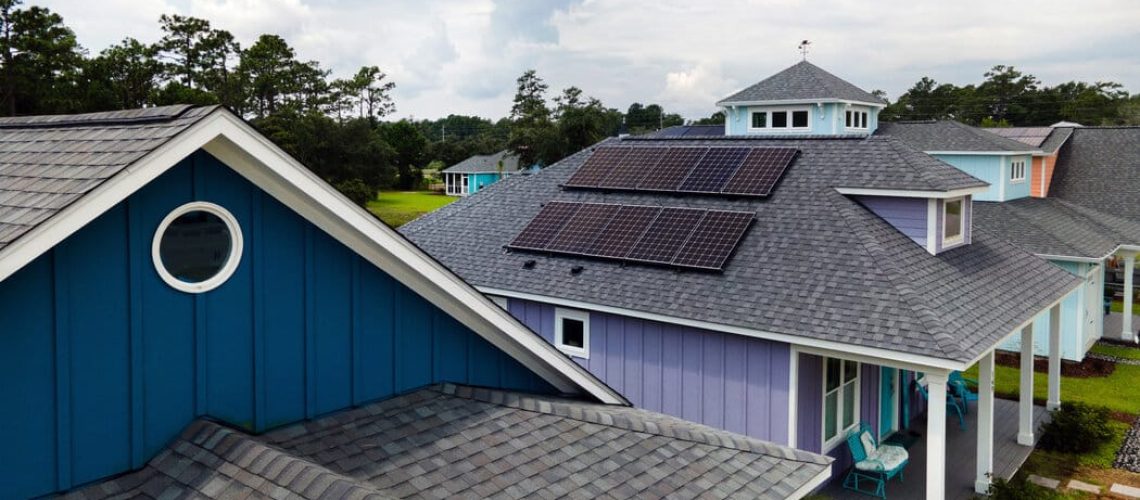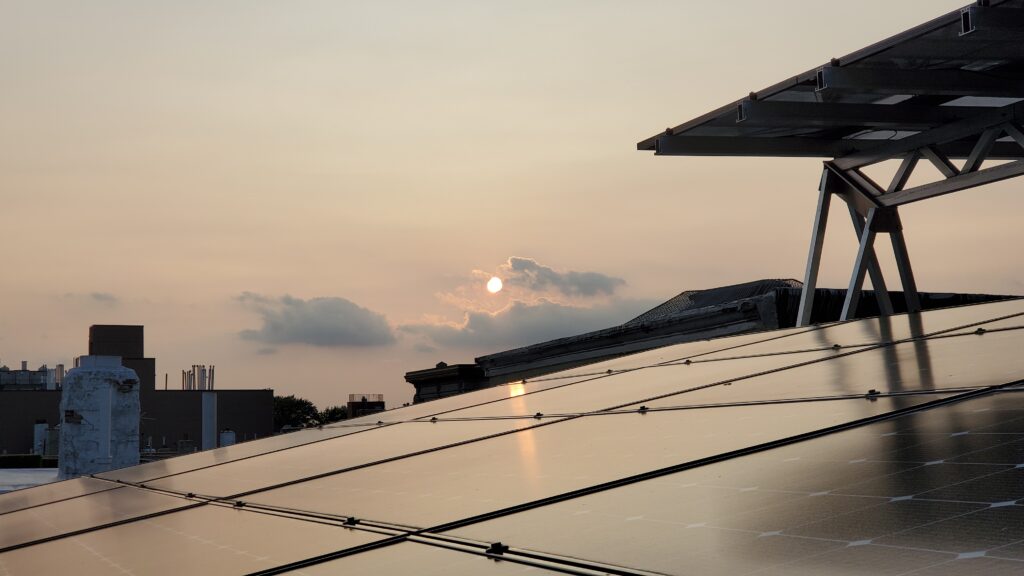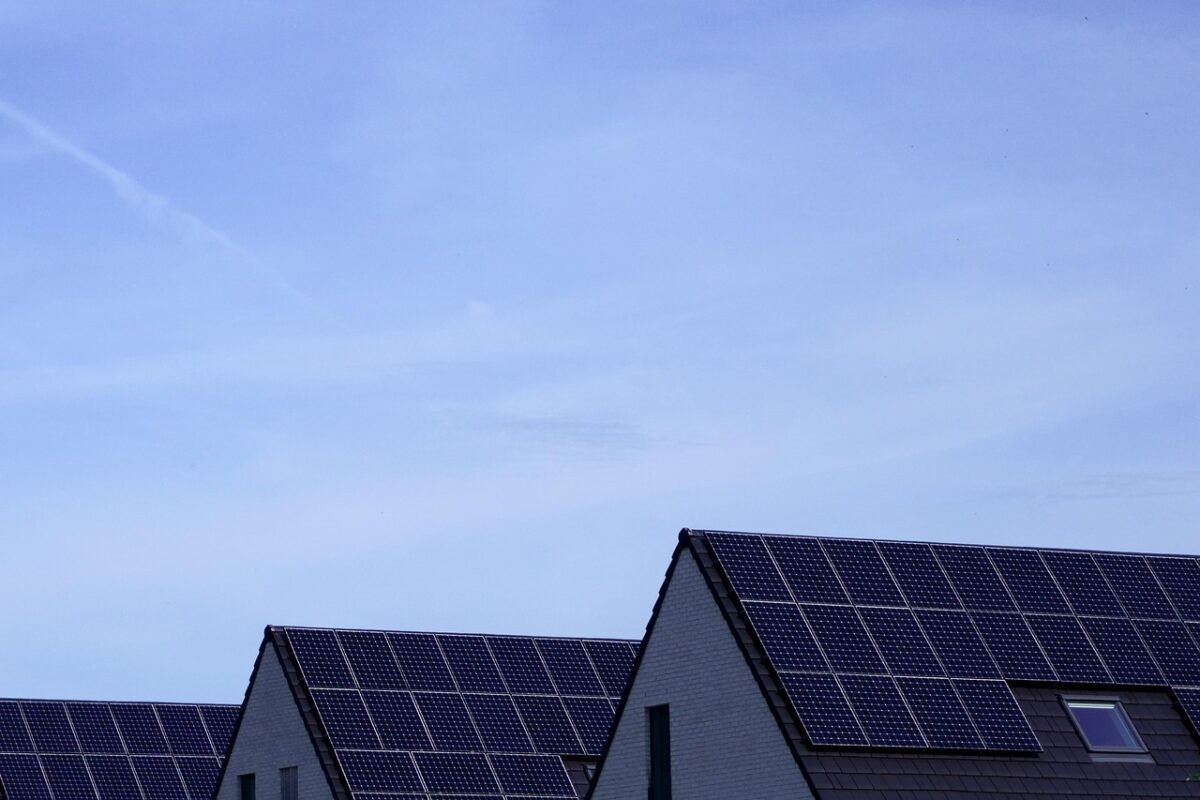As retirement neared, Eric and Camela Moulder decided to downsize from their four-bedroom home in West Grove, Pa. They had two main goals: find a place near the beach, and reduce their living expenses.
When one of the couple’s three daughters told them about Heron’s Nest, a new cottage community in Shallotte, N.C., the Moulders were intrigued. The development, calling itself an “environmental village,” was a quick drive from Ocean Isle Beach, a barrier island near the South Carolina border, and the homes were reasonably priced, between $300,000 to $400,000.
The couple liked that each house came with a three-kilowatt rooftop solar system, which would reduce their carbon footprint and cut their utility bill by a third. But as they toured the 31-home community, they discovered that they were looking at North Carolina’s first residential “microgrid” development.
A microgrid is a network of buildings that essentially acts as a miniature power grid. It can operate outside of the larger municipal electrical system by ensuring backup power for the entire development, which can be produced by a solar array system and stored in a battery.
“The rooftop solar and the sense of security we got knowing that you’d have power during a storm sealed the deal for us,” said Mr. Moulder, 57, a semiretired inventory manager. The couple, who paid in the low $200,000s for their 1,350-square-foot, three-bedroom home, moved into the community last July.
The U.S. Energy Department estimated that there were more than 450 operational microgrids in the United States in 2022. But there is no central repository for such data, and Elham Akhavan, a senior research analyst at Wood Mackenzie, a consultancy for energy and renewables industries, said there are likely more than 3,500 microgrids in 30 states.
Many have been built by government agencies, academic institutions and health care facilities, Ms. Akhavan said. But she predicts that residential microgrids will be quick to expand, as home developers opt to invest in power-resiliency projects and as states begin to offer funds and incentives. The California Public Utilities Commission, for one, recently approved a $200 million program to bring community microgrids to disadvantaged and tribal communities that are vulnerable to power outages.
Americans experienced an average of about seven hours of power interruptions in 2021. It was more in Louisiana, Oregon and Texas, where residents went without power anywhere between 20 and 80 hours during the year. About two-thirds of North Americans will experience energy shortfalls this summer, according to the North American Electric Reliability Corporation, a nonprofit regulatory authority. Traditionally, homeowners buy generators as a backup power source. But developers are finding that energy-resilient homes and communities are powerful marketing tools to lure buyers and renters.
At Heron’s Nest, the 62-kilowatt solar system and 255-kilowatt-hour battery are maintained by the local utility, Brunswick Electric Membership Corporation. Homeowners get a monthly energy credit on their utility bills by signing an interconnection agreement with the utility, which controls their hot-water heaters and thermostats when there’s high power demand. If the local power grid is stressed and the utility believes a power outage is necessary, residents here will be able to keep their lights on.
Heron’s Nest is part of wider electric cooperative in North Carolina, a membership-based utility that allows customers, acting as shareholders, to benefit from revenue that is either diverted back into the utility or passed along as dividends. “This is why microgrids are very attractive to us, because when we lower the costs of maintaining the grid, the profit goes back to the customer as a lower utility bill,” said Nicky Nance, a key accounts and renewable specialist with Brunswick Electric.
Graham Adams, the developer of Heron’s Nest and the president of Adams Group Architects, long aspired to build sustainable and energy-resilient homes. A decade ago, when he approached six large home builders to inquire about developing a microgrid, the best proposal he got was to offer rooftop solar as an add-on feature.
“At that time, the builders all thought that the buyers saw more value in a nicer kitchen than a cut in their energy bill,” Mr. Adams said.
As the intensity of coastal storms and power outages increased, he stuck with his concept. After finding some land in Brunswick County, where prices remain lower than in other parts of the state, he went into business with his son, Brian Adams, who also has experience building solar projects. They tapped private investors to get Heron’s Nest off the ground in 2017 for $8 million.
The 31 homes at Heron’s Nest have sold quickly. It was easy to explain to buyers how rooftop solar panels, included in the price of each home, could lower a utility bill, and how the microgrid would generate power when residents most needed it. “It’s certainly has been a very attractive marketing tool,” Graham Adams said.
The first resident moved into Heron’s Nest about five years ago, and the 54 people who live there now are a mix of retirees and first-time buyers.
Mr. Adams sees Heron’s Nest as a prototype for future microgrids in North Carolina. “We could go bigger with more homes,” he said.
In Menifee, Calif., KB Home, a development firm, is building a microgrid with more than 200 houses that come with a heat pump, electric appliances, solar panels, a battery and a shared community battery system. With California now mandating that most new homes include solar panels, this neighborhood about 80 miles southeast of Los Angeles is a test case to see how large-scale communities can be built to be energy resilient, while reducing carbon emissions and lowering energy costs, said Dan Bridelman, senior vice president of sustainability, technology and strategic sourcing for KB Home.
For Mr. Bridleman, the Menifee microgrid, where the first residents started moving in this spring, will help determine “whether an entire community can become self-sufficient with power. So we wanted to do something that seemed disruptive but will eventually become the standard.”
Here, the homes, priced from $490,000 to $610,000, will use Schneider Electric’s Square D power equipment, which includes a smart electrical panel, connected switches and outlets, and a phone app that will calculate when and how much power customers use from each appliance. Homes will also be wired to incorporate electric-vehicle charging stations, and eventually could be equipped with vehicle-to-home charging stations, allowing residents to pump the power stored in their car battery back into their house.
For this development, SunPower, a solar-energy services provider, obtained a $6.65 million grant from the U.S. Department of Energy to help build the community battery storage system. The residents will lease their rooftop solar systems and smart electrical panels, and enter a power purchase agreement with Southern California Edison, the local utility, to lower their utility bills.
While residents can feel secure knowing they are generating and storing power, a microgrid also eases the burden on the local utility, because it can disconnect from the larger grid during a period of overload — like a record-breaking heat wave. As Mr. Bridleman put it, “developing energy efficient homes and communities that help the local power grid is the next venture of energy independence.”
Not every energy-resilient community is classified as a microgrid. Babcock Ranch, a development about 15 miles northeast of Fort Myers, Fla., calls itself the nation’s first solar-powered town. Unlike a microgrid, it doesn’t have enough battery power to back up the entire development. But it does have an 870-acre solar farm to power the community, including two solar array systems totaling 150 megawatts of capacity, a transmission substation (with another being built), and a 10-megawatt battery storage system.
The development, which opened in 2018, is massive. Real estate investor Syd Kitson raised $700 million in capital to buy 92,000 acres of land more than a decade ago. He then sold 80 percent of the land to the State of Florida and Lee County for a total of $350 million, retaining 18,000 acres to build Babcock Ranch.
Babcock Ranch currently has about 6,000 residents living in about 3,000 units. By completion, the population is expected to grow to 50,000 in about 19,500 residential units.
Last fall, as Hurricane Ian barreled toward Fort Myers, Tim Black decided that his elderly parents and his daughter, then a college senior, should take cover at his home in Babcock Ranch, which he bought in 2020 with his wife, Jennifer.
More than two million Floridians lost power when Ian made landfall — but not one home went dark in Babcock Ranch. “There’s a reason why they call this place ‘the bubble’,” said Mr. Black, 57, a semiretired real estate executive. “You’d be foolish not to think about how the weather can affect your home, especially in Florida.”
Mr. Kitson, the CEO of the property development firm Kitson & Partners (football fans will remember him as a guard for the Green Bay Packers and the Dallas Cowboys in the 1980s) has been thinking about it for decades. “People had a hard time digesting what resilience and sustainability meant,” he said.
After buying the land for Babcock Ranch, he donated 440 acres to Florida Power & Light (FPL) to help offset funding so the local utility could build the FPL Babcock Ranch Solar Energy Center, which now has about 670,000 solar panels.
“It was worth it because we proved that spending more to build a resilient power supply was the smart move,” said Mr. Kitson, who rode out Hurricane Ian in his home in Babcock Ranch.
Residents at Babcock Ranch don’t get a discount on their utility bills, so many residents have installed their own rooftop solar systems. Mr. Black said his monthly bill was about $300 before installing panels on his home a few months ago. Now it’s about $110.
In the suburbs of San Diego, Sonnen Inc., a solar battery and software maker, and solar installer Baker Electric Home Energy, have formed a Virtual Power Plant (VPP) community — so far with about 200 homes — where owners can sell their solar energy directly back to the California Independent System Operator. A VPP comprises a group of small-scale power producers that are aggregated to help alleviate grid load and stem power outages. Here, residents have been able to lower their bills by about 15 percent and will receive a yearly check between $150 and $300, according to Geoff Ferell, vice president of Virtual Power Plants and Commercial & Industrial Project Business at Sonnen.
Reducing utility bills, along with carbon emissions, is great, but for people like the Moulders in North Carolina, living in a microgrid is all about the security of a reliable energy source. “Every time my storm warning alarm goes off on my phone,” Mr. Moulder said, “it’s nice to know that you will still have power.”






